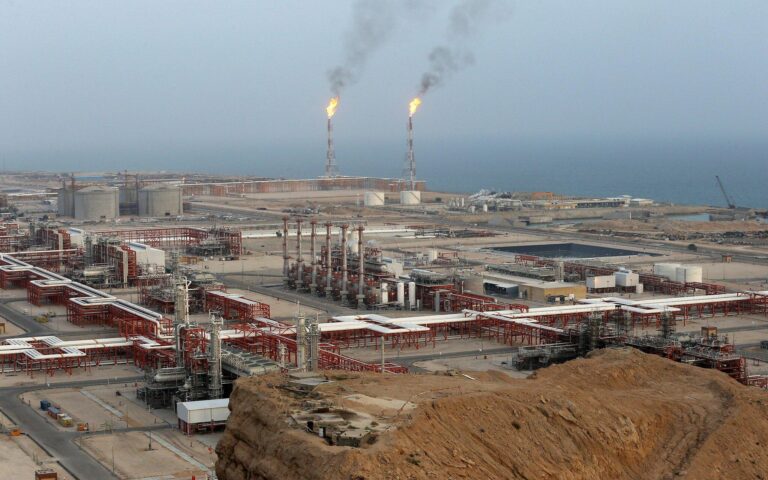Discounts on Iranian oil sold to China have widened significantly as the country’s independent refineries, known locally as “teapots,” slow their crude purchases amid economic uncertainties. The deepening price cuts come amid ongoing challenges in Beijing’s energy market, highlighting the shifting dynamics in Asia’s largest oil consumer and the enduring impact of sanctions and geopolitical pressures on Iran’s oil exports, according to sources cited by Reuters.
Discounts on Iranian Oil Widen Amid Reduced Demand from Chinese Independent Refiners
Iranian crude discounts in Asia have deepened as Chinese independent refiners, commonly known as “teapots,” continue to curb their purchases amid rising financial pressures and weaker demand. These smaller players, which typically rely on discounted grades to compete with state-run giants, have scaled back volumes amid tighter credit conditions and inventory glut, prompting sellers to widen price differentials to attract buyers. Market sources indicate that official selling prices (OSPs) for Iranian oil have plummeted by up to $5 per barrel compared to Middle Eastern benchmarks, signaling a significant shift in trade dynamics in the region.
The ongoing slowdown in teapot purchases has also led to a reshuffle in the Asian crude landscape. State-owned refiners remain cautious but stable in procurement strategies, while Iranian producers are increasingly compelled to offer deeper discounts to maintain market share. The table below highlights the latest discount trends for key Iranian crude grades compared to regional benchmarks:
| Crude Grade | Discount vs. Brent ($/bbl) | Discount vs. Dubai ($/bbl) |
|---|---|---|
| Light Iranian | -$4.75 | -$2.20 |
| Medium Sour | -$5.10 | -$2.60 |
| Heavy Sour | -$5.50 | -$3.00 |
Industry analysts warn that unless demand from independent refiners rebounds or alternative buyers emerge, discounts on Iranian crude are likely to persist or deepen further. Meanwhile, geopolitical factors and sanctions remain a backdrop of uncertainty, complicating Iran’s efforts to stabilize oil export revenues. The teapots’ diminished appetite is challenging Tehran’s pricing strategy, forcing a reassessment of market approaches in Asia’s competitive fuel sector.
Impact of Slowing Purchases by Teapots on Iran-China Oil Trade Dynamics
Recent market analysis reveals that China’s independent refineries, known as teapots, are significantly scaling back their purchases of Iranian crude amid mounting operational and financial pressures. This contraction has contributed directly to a sharper slide in Iranian oil premiums, intensifying the already competitive landscape between Middle Eastern suppliers. Sources within the industry emphasize that ongoing logistical hurdles, compliance concerns, and tighter global financing conditions are driving the teapots’ cautious approach, affecting Iran’s export dynamics more broadly.
Key factors influencing the slowdown include:
- Rising costs of insurance and freight for shipments reaching Chinese ports
- Heightened scrutiny from international watchdogs on sanctioned entities
- Limited storage capacity amid fluctuating domestic demand patterns
- Shifts in Chinese regulatory policies potentially impacting refinery operations
| Parameter | Effect on Iran-China Trade |
|---|---|
| Teapots’ Buying Volume | Reduced by 15-20% Q1 2024 |
| Discount on Iranian Crude | Widened to nearly $4/barrel vs Brent |
| Shipping Delays | Increased by approx. 10% |
The combined effect of these variables is recalibrating trade flows, forcing exporters to offer steeper discounts to maintain market share in China. Industry insiders speculate such The combined effect of these variables is recalibrating trade flows, forcing exporters to offer steeper discounts to maintain market share in China. Industry insiders speculate such trends may continue throughout 2024 if operational and regulatory challenges persist, potentially reshaping the competitive dynamics between Middle Eastern oil suppliers and impacting Iran’s oil revenue projections.
If you need a more detailed analysis or further insights into specific implications for global oil markets or Chinese energy policy, feel free to ask!
Strategies for Iranian Exporters to Navigate the Changing Chinese Market Landscape
Amidst the growing challenges faced by smaller independent refineries-colloquially known as “teapots”-Iranian exporters must reassess their approach to maintain and expand footholds in the Chinese oil market. With discounts on Iranian crude steepening as these teapots reduce their procurement pace, exporters should prioritize building direct relationships with larger state-owned enterprises (SOEs) in China, which tend to have more consistent buying patterns and greater resilience to market fluctuations. Flexibility in contract terms and readiness to offer competitive pricing will also serve as critical leverage points in this evolving environment.
Additionally, Iranian exporters can benefit from diversifying market entry strategies by tapping into emerging regional hubs within China. Strengthening logistics networks and adopting tailored marketing approaches to regional demand will mitigate risks tied to concentrated buying power. The following table outlines core strategic priorities for exporters navigating these shifting dynamics:
| Strategy | Action Points | Expected Outcome |
|---|---|---|
| Engage SOEs Directly |
|
Stable purchase volumes & reduced volatility |
| Pricing Flexibility |
|
Improved competitiveness amid market softness |
| Regional Market Focus |
|
Diversified demand base and risk distribution |
Final Thoughts
As discounts on Iranian oil deepen amidst waning demand from China’s independent refiners, the dynamics of Tehran’s export strategy are set to face new challenges. With struggling teapots reducing their intake, the future trajectory of Iranian crude in the world’s largest oil consumer remains uncertain, underscoring the complex interplay between geopolitical pressures and market realities.




